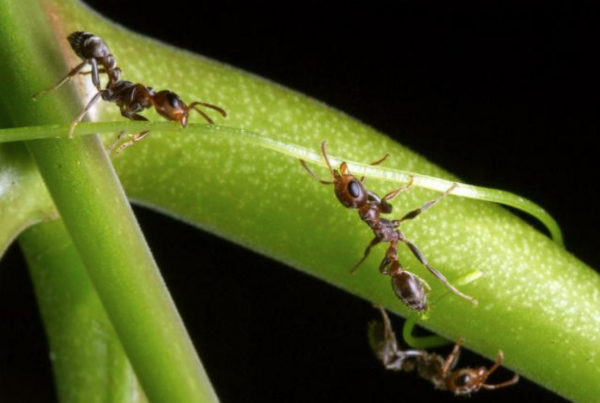Scientists have long wondered about the function of rudimentary structures which have no apparent use, such as organs like the appendix and tonsils. In On The Origin of Species, Charles Darwin hypothesized that these vestigial structures are remnants of our evolutionary past and explained their presence using his widely-accepted theory of natural selection.
A team of McGill biologists recently published a paper in Nature suggesting a need to re-examine this idea. Their lab discovered that a seemingly-useless structure in ants—specifically, the rudimentary wing discs—determines the social caste that an ant develops into, such as a soldier or worker ant. Hence, the wing discs determine body size, lifespan, and other characteristics that correspond to the ant’s role.
They also found that the discs can regulate the balance of social groups based on an environment’s demands. In response to environmental stressors, ants release pheromones that influence the signals produced by rudimentary wing discs of ants in the colony. Consequently, the colony can increase its worker-to-soldier ratio on demand.
Ehab Abouheif, professor in the Department of Biology and co-author of the paper, explained that the scientific community has left this area of evolutionary biology largely untouched.
“We have to cast a different eye on this whole class of biology that has been sitting dormant for 100 years,” Abouheif said.
Scientists have yet to find similar unassuming organs influencing growth and development in the human species. Abouheif believes that observing such a phenomenon would be particularly difficult, crediting the examinability of ants for his sizeable discovery.
“Different organisms make different biological phenomena obvious,” Abouheif said.
In the Pheidole genus of ants, minor workers and soldiers have two distinct morphologies, which prompted Abouheif’s investigation into the developmental switchpoint that leads to their differentiation.
Barbara McClintock, an American scientist and geneticist, was, similarly, able to discover transposable elements in DNA sequences thanks to traits within the species of corn she was studying, making the phenomenon salient to observe.
Although most research on human vestiges has been inconclusive, there have been reports of the human appendix sending out signals during development. The function of these signals is still unknown.
If the seemingly-redundant organs in humans work like an ant’s wing discs, Abouheif believes it would have huge implications for medicine. He postulates that, by understanding the signalling function of rudimentary structures, scientists could develop interventions for developmental processes that have gone awry, such as in the case of premature births.
While potential implications of their findings are vast, Abouheif expects that garnering medical interest and investigation in this area will be gradual.
“Medical research is extremely conservative,” Abouheif said. “It’s not like tomorrow doctors [will say] ‘[We’ve] got to look [at rudiments].’”
On Oct. 9, Minister of Science and Sport Kirsty Duncan announced a $558 million investment from the federal government in discovery science. This investment supports the Natural Sciences and Engineering Research Council of Canada (NSERC) Discovery Grants program, which provides funding to researchers, like Abouheif, who work on projects with long-term goals.
Abouheif, however, believes this investment is insufficient and strongly advocates for the importance of discovery-based research in producing medical developments. He points out that, like his discovery in Pheidole ants, many pivotal findings in science are often stumbled upon in unexpected territories of research.
“Sometimes, when we’re looking for something, we’re looking under the light,” Abouheif said. “We’re looking in obvious places, but that’s not always where the answer will be.”









